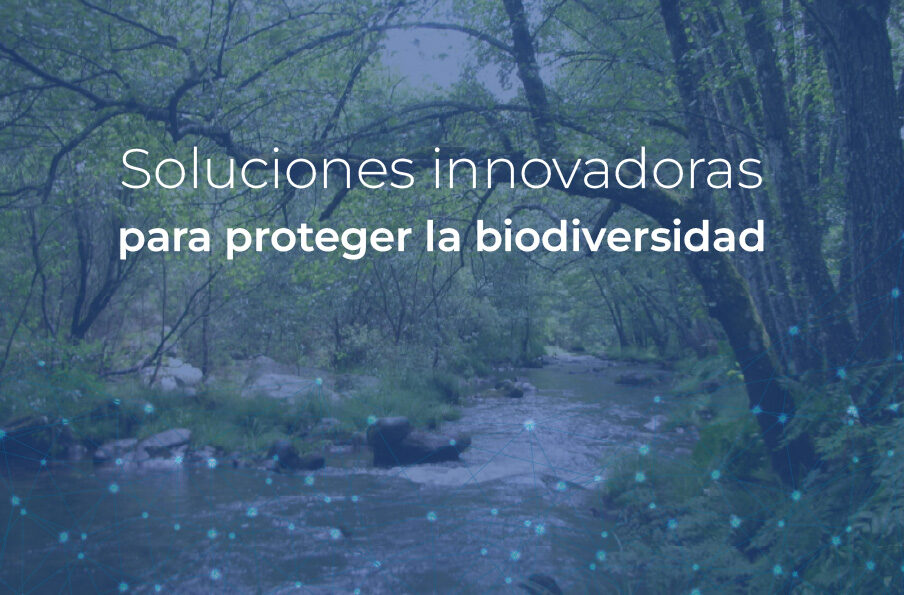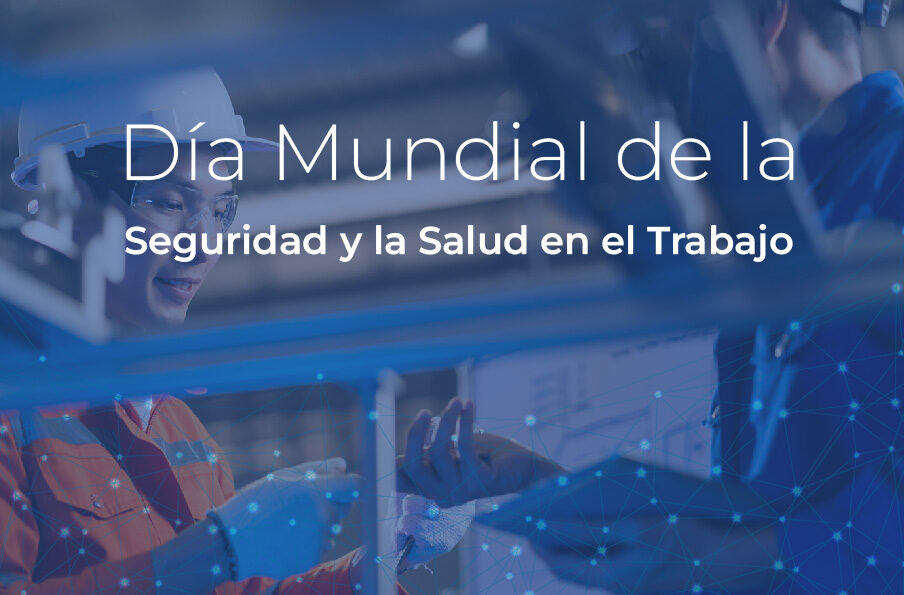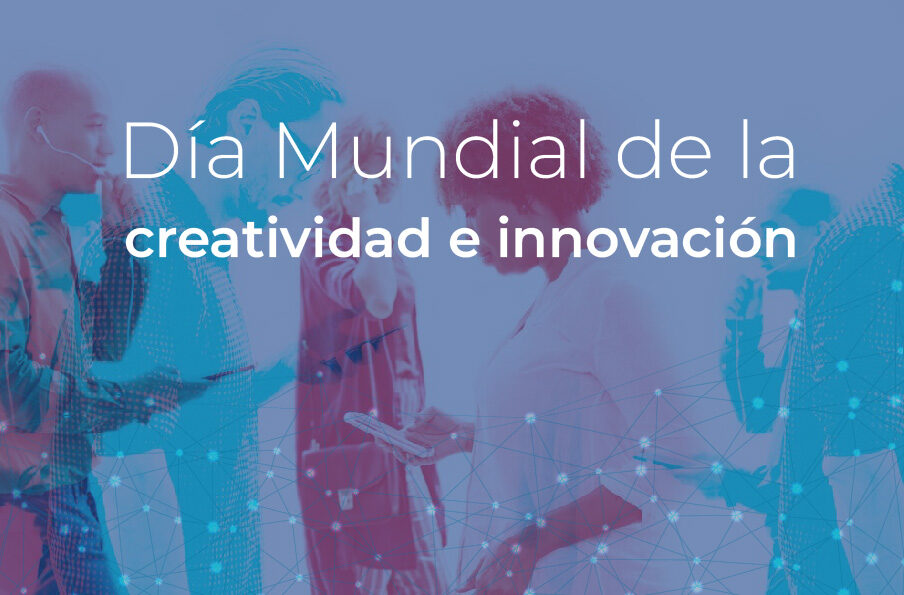Entrepreneurship and Innovation Strategy of Castilla y León 2027, towards a more digital and sustainable model that applies innovative solutions.
On Monday, March 27, the Junta de Castilla y León together with ICE, presented in Salamanca the Strategy for Entrepreneurship and Innovation of Castilla y León 2027 (EEI27), which aims to boost the economic growth of Castilla y León through innovation, entrepreneurship and digitization.
The strategy aims to increase the number of innovative companies; develop the technological, digital and sustainable transfer of the business fabric; favor territorial balance; and promote specialization niches and the training of talent.
Carlos Manuel García Carbayo, Mayor of Salamanca, welcomed the participants, pointing out the need for an environment of stability and political funding to generate the necessary ecosystem for innovation.
From NODDO, Network of Technology Centers of Castilla y León, we attended with great interest a presentation where the Minister of Economy and Finance, Carlos Fernández Carriedo, stressed that the main weapon is collaboration and made available to this strategy all the instruments at its disposal to finance training and deploy the entire regional innovative ecosystem, referring to the Technology Centers and the NODDO Network.
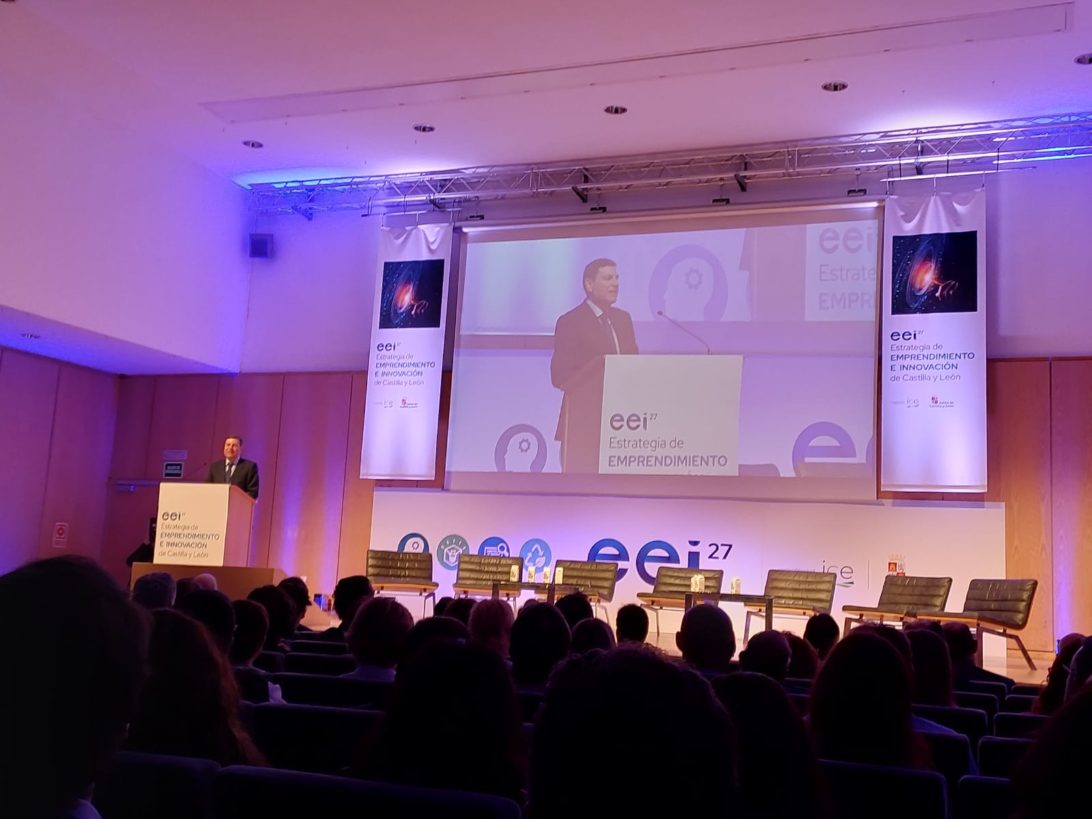
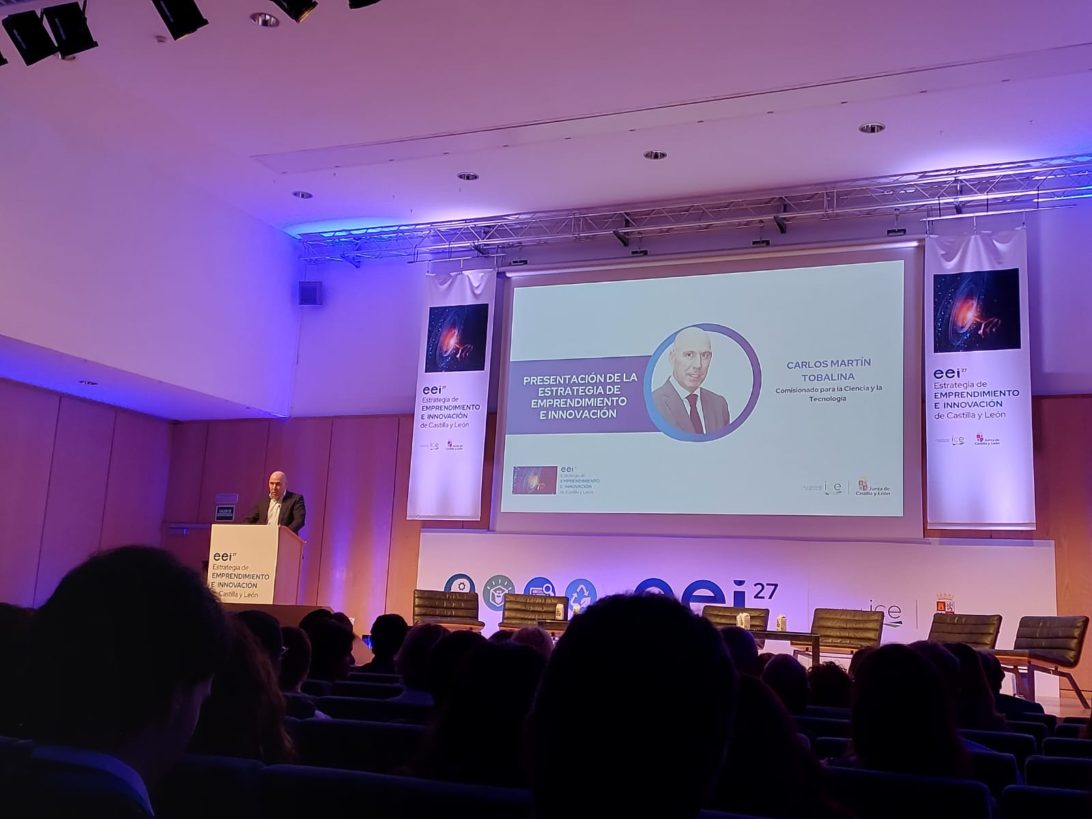
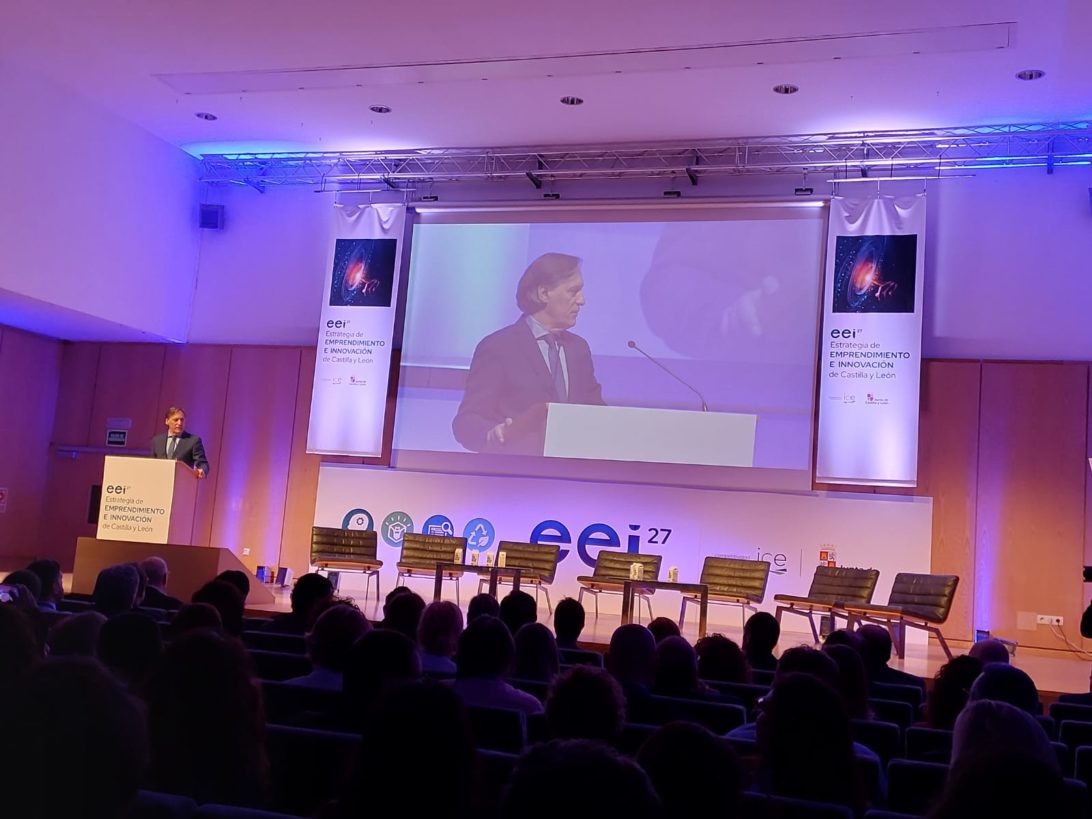

The IEE 27 is articulated through 4 major strategic axes:
- By building the future of R&D&I, they will contribute to generating new knowledge and innovations in companies and bringing them to the market, as well as increasing the Community’s presence in Europe.
- Castilla y León Emprende, will be aimed at promoting the creation of companies and collaboration between the agents of the innovation and entrepreneurship ecosystem.
- The digital transformation will be driven by the business fabric of Castilla y León, as well as the consolidation of an offer of high quality and value-added digital products and services.
- Sustainable Castilla y León will help companies to position themselves to meet the challenges presented by the SDGs, reduce waste generation and make the most of those that cannot be avoided.
The EEI27 will be the beacon of entrepreneurship and innovation in the region for years to come.
Also, with the assistance of Carlos Martín Tobalina, Commissioner for Science and Technology, the importance of the technology transfer network to be carried out by NODDO and the Technology Centers of Castilla y León, within the framework of the IEE27 as the articulating arms of innovation, was highlighted.
We also attended a round table on open innovation, moderated by Sandra Sinde Cantorna, where the speakers, Isabel Muñoz Pedriza of Limmat Group, Isidoro J. Alanis of Global Exchange Group, Diego Gonzalez-Aguilera of TIDOP Research Group, Patricia Tejado of GMV, Pablo Pérez Robla of AQUACORP and Pablo Sabín of Cesefor shared from different points of view their stories of how open innovation has been the great alidade in their experiences and professional careers. In open innovation companies go beyond their limits and develop cooperation, enabling them to transfer their capabilities to create a final product tailored to a client’s needs.
Technological innovation solutions of the Technological Centers of Castilla y León
In the exhibitors’ area, we were able to share experience with almost 40 regional agents of the innovation ecosystem. In this space, the Technology Centers of Castilla y León, AIR Institute | CARTIF | Cesefor | CETECE technology center | CIDAUT | CTME – Miranda de Ebro Technology Center Foundation | ICAMCyL Foundation | itagra.ct | ITCL Technology Center, exhibited a sample of demonstrators on solutions and practical implementations of innovation that each Center develops.
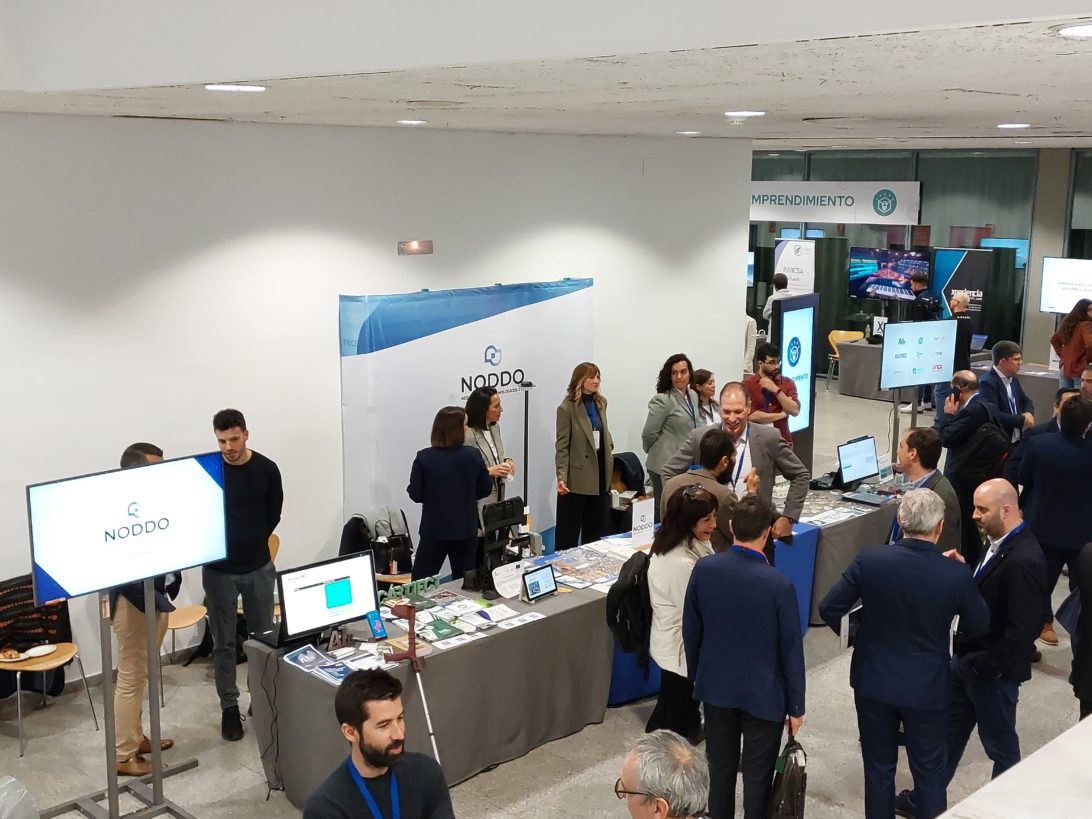
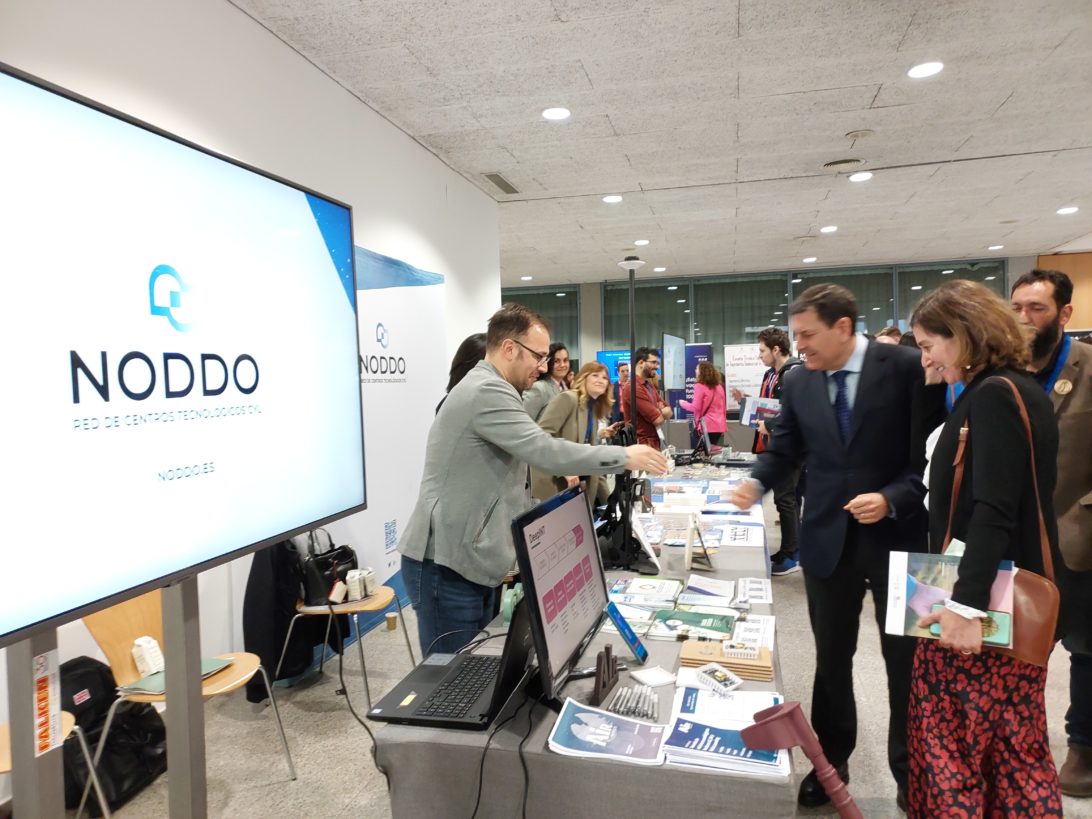


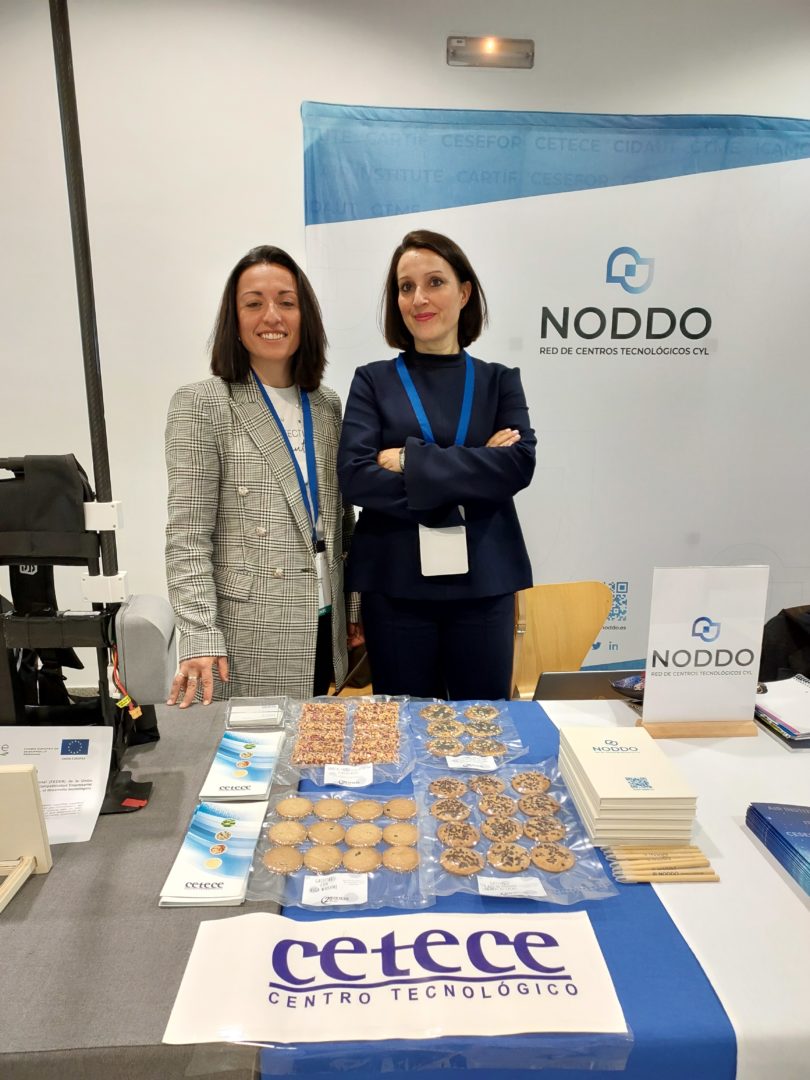
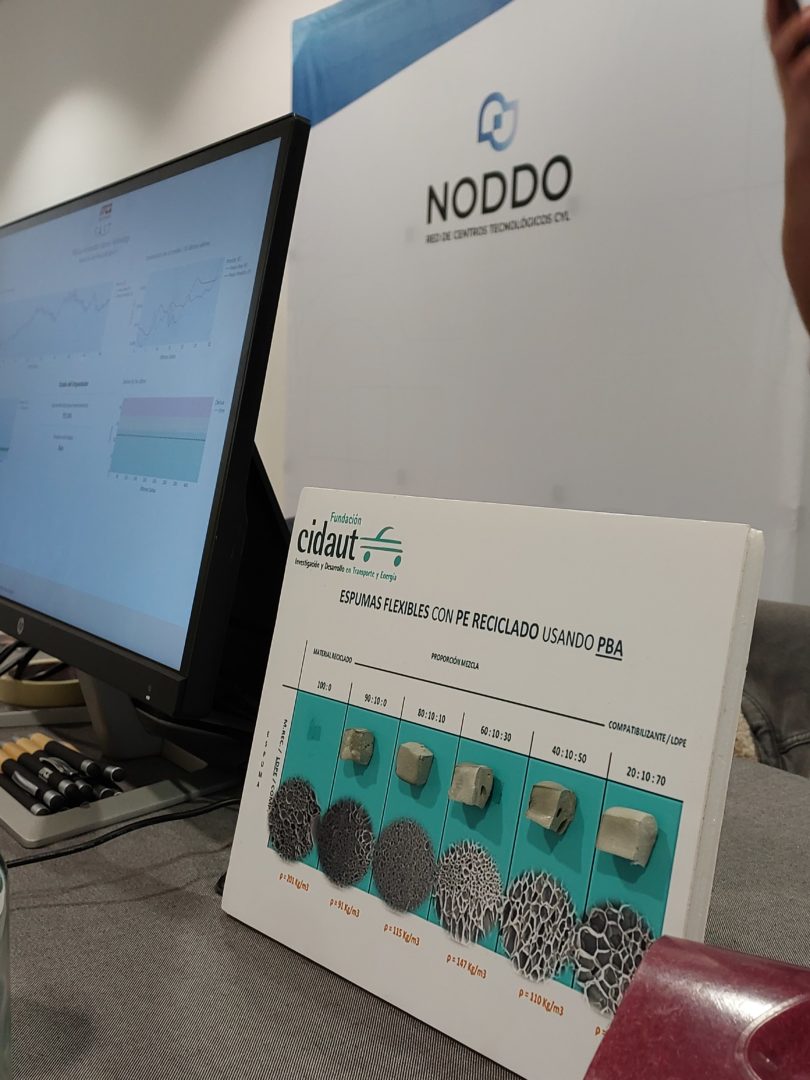
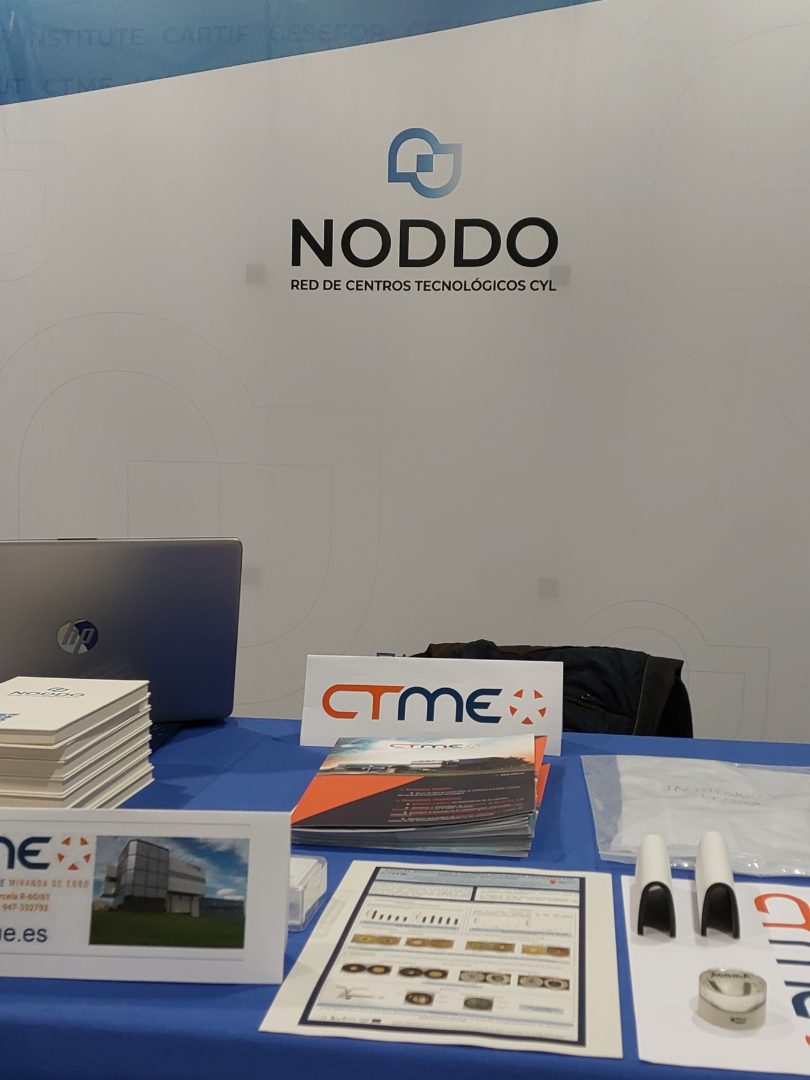

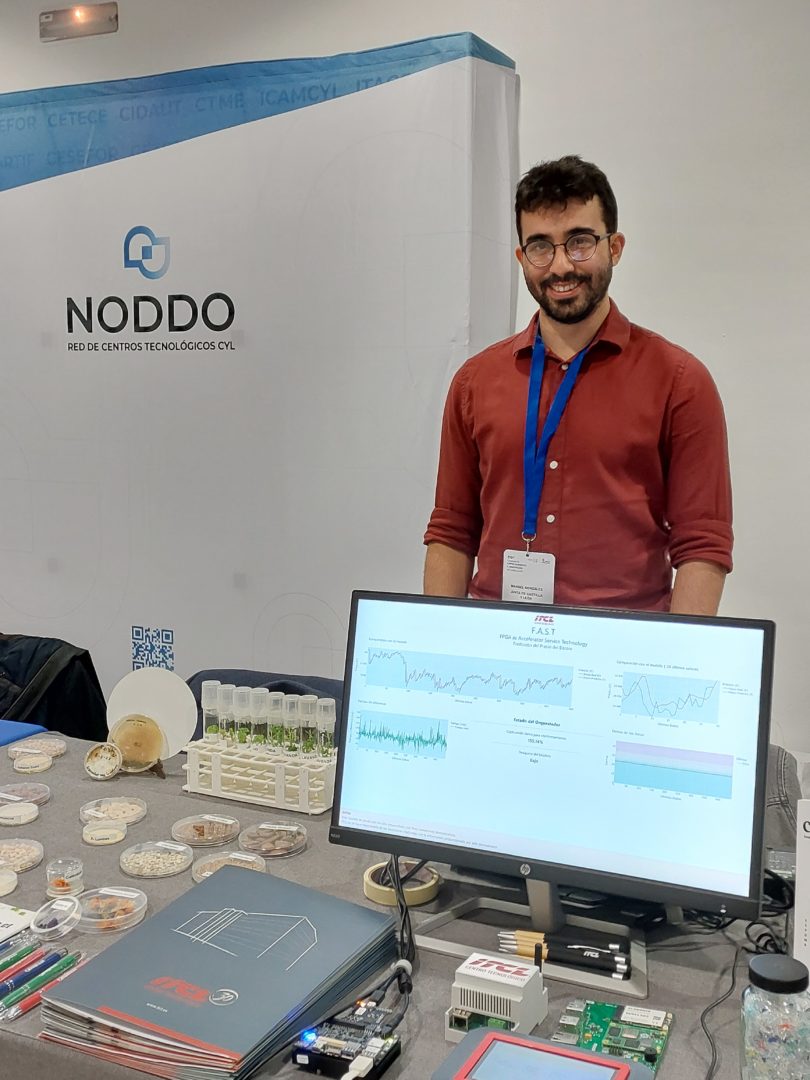
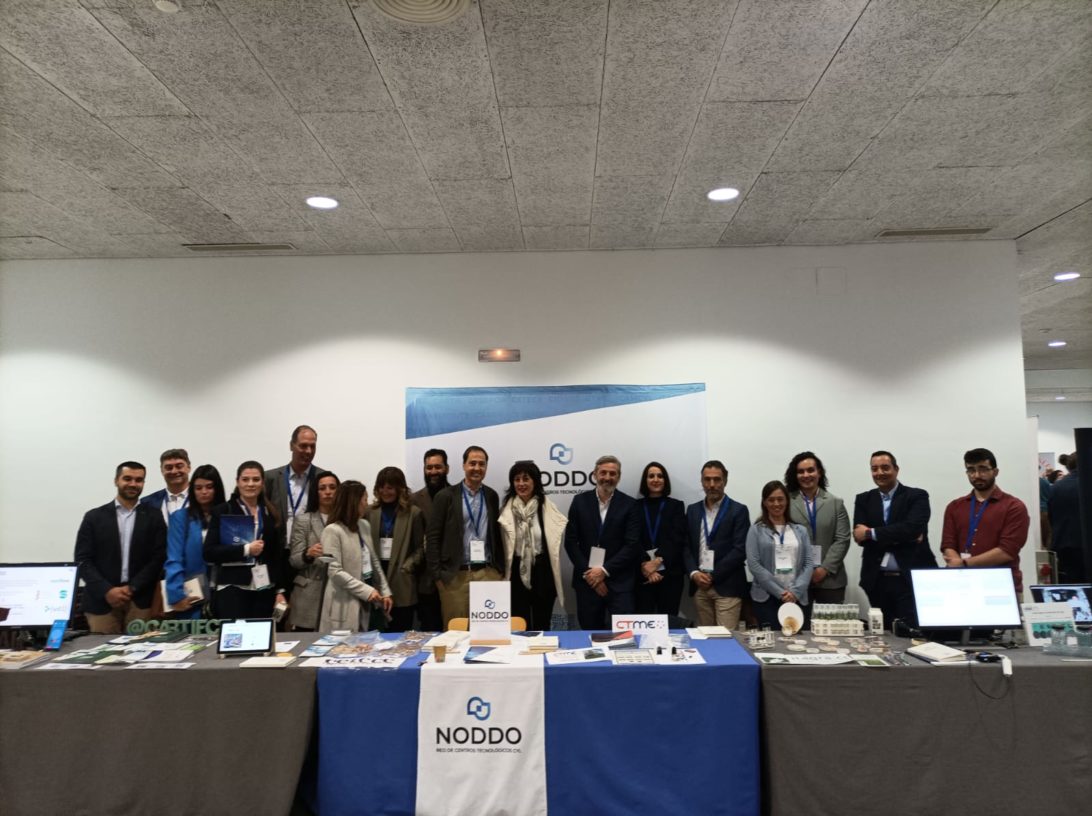
AIR INSTITUTE showcased the development of technological solutions based on the Internet of Things (physical objects (“things”) that incorporate sensors, software and other technologies to connect and exchange data with other devices and systems through the Internet), Artificial Intelligence and Machine Learning. They showed projects such as Deep Intelligence, to transform data into valuable information, thus helping to make the best decisions thanks to optimal AI algorithms and machine learning; Load Crutches, an intelligent device system to measure, control and correct in real time, the load exerted by the patient on each crutch during rehabilitation; or CO2 Project, devices for real-time measurement of CO2 and environmental parameters, among others.
CARTIF attended with a sample of technologies for EBT (Technology Based Companies) in the areas of health and welfare on social robotics for assistance, biomass analysis and testing laboratory; Cityfied project to improve the energy efficiency of buildings and housing comfort; BioSFerA to develop a cost-effective interdisciplinary technology to produce sustainable fuels for the aviation and maritime sectors; or the extrusion project in the food industry.
CETECE showed different agri-food products developed in the R&D&I department of the Center for different companies, with nutritional and functional improvements. Samples of products already on the market or in the process of implementation, such as wakame seaweed cookies (high in iodine and folic acid), no added sugar cookies with cocoa nibs (rich in polyphenols and high in fiber), etc… Cetece works to reduce the fat content in food, reduce sugar by more than 30% or for food to have no added sugar. All this to apply scientific and technical solutions and discoveries to industrial needs or to the development of new or improved products.
CIDAUT presented different solutions developed within the framework of the circular economy, such as the recycling of thermoplastic composite laminate waste reinforced in high performance materials, the revaluation of plastic waste composed of PEI reinforced with fiberglass from the aeronautical sector or flexible foams with pre-recycled using PBA, among others.
CESEFOR, forest inventories and Artificial Intelligence in Castilla y León, brought to the event a portable system for the estimation of timber from the analysis of stereoscopic images. The solution facilitates and reduces the cost of stock estimation for forest harvesting by measuring tree diameters in the first three meters of height.
From CTME attended with a demonstration of technological solutions such as SVAQR, a dynamic QR platform applied to the industrial world, an application for document management, augmented reality application and marketing; the application of surface treatment by thermal spraying on technical plastics, a new field of work for efficient transportation, where thermal spraying technology makes it possible to generate ceramic and metallic coatings on high-performance plastic substrates, providing new properties such as temperature resistance, anti-corrosion, structural or conductivity properties that open up a new field of application for these materials in the transportation sector; or functional bioplastics for sustainable agriculture. New formulations of compostable plastic films with antifungal and antibacterial properties for agriculture free of chemicals and plastic waste.
ITAGRA brought the field into the room. It showed, on a small scale, the work carried out at the agro-industrial level, agricultural experimentation, biotechnology, enology and environment. Mushroom cultivation, in-vitro cultivation, seed and fertilization trials and forest trial material, among others.
They revealed their capacity to develop projects such as in-vitro cultivation to obtain virus-free material, the recovery of forgotten varieties such as Volga Flax or Fenugreek, the development of projects to obtain data and qualities of aromatic plants and flowers in Castilla y León and Portugal, or the success of collaborative projects with other companies, in this case with Cartif, Huercasa and Campfrío, for the development of products based on native vegetable proteins with a texture similar to meat products.
ICAMCYL presented its work in the participation of the strategy of efficient management of industrial resources, energy efficiency, eco-innovation and substitution of critical materials in order to promote the development of advanced materials and the sustainability of raw materials for the network of industries in the region, as well as the valorization of the wealth of raw materials in Castilla y León, in line with its Smart Specialization Strategy (RIS3).
They came as international innovation facilitators, offering technological implementation solutions and highlighting strategic projects such as MINE.THE.GAP or l4GREEN.
ITCL brought an inference accelerator system for Artificial Intelligence models under development #IberusHealth and #RedCerveraCELIA. They exhibited neuromorphic technology based demonstrators (very large scale integration system containing analog circuits to mimic neurobiological structures located in the nervous system) with the improvement of efficiency, energy efficiency and avoiding cloud services, to run different projects in real time as concentrators of monitoring equipment in ICU or in energy monitoring and management and solar inverters. Artificial Intelligence for the Environment and Health
Thanks to the
NODDO: The Network of Technological Centers of reference in Castilla y León
From the Network of Technology Centers interdisciplinary work in an integrated manner, covering all technical disciplines. technical disciplines and finding innovative solutions in all parts of the processes.
If you want us to help you to empower your company and to find innovative technological solutions for your processes, do not hesitate to contact us at Noddo.
Follow us on LinkedIn and Twitter or sign up for our Newsletter to stay up to date with the latest news on the Web.



